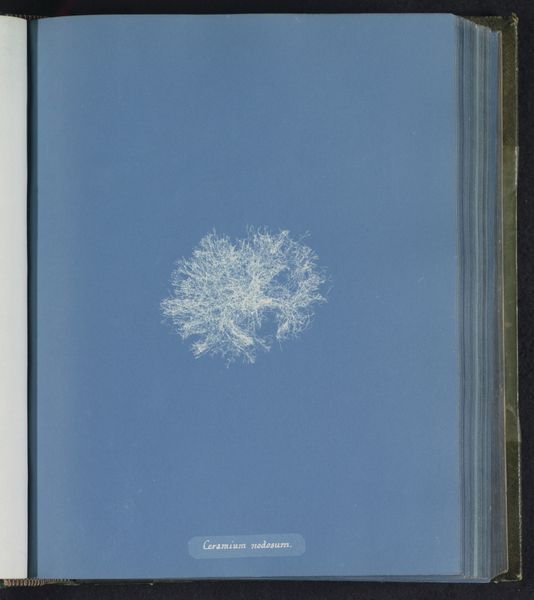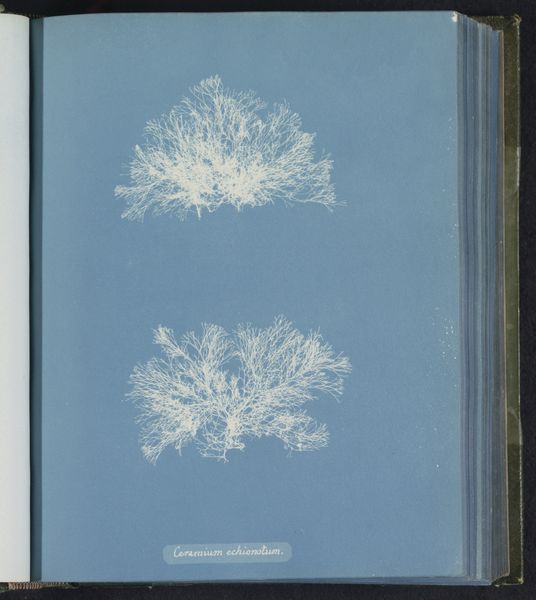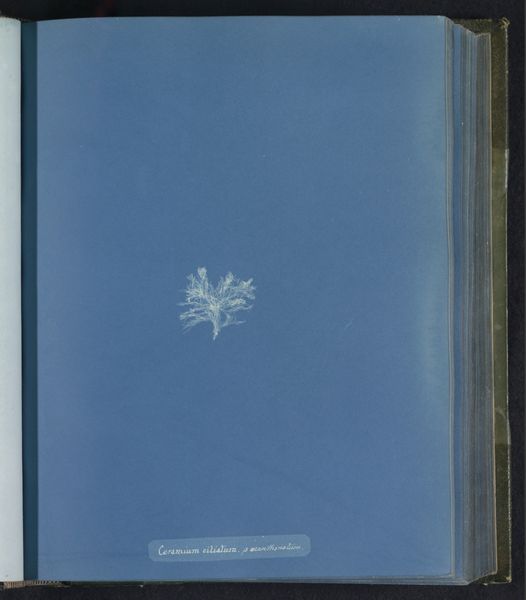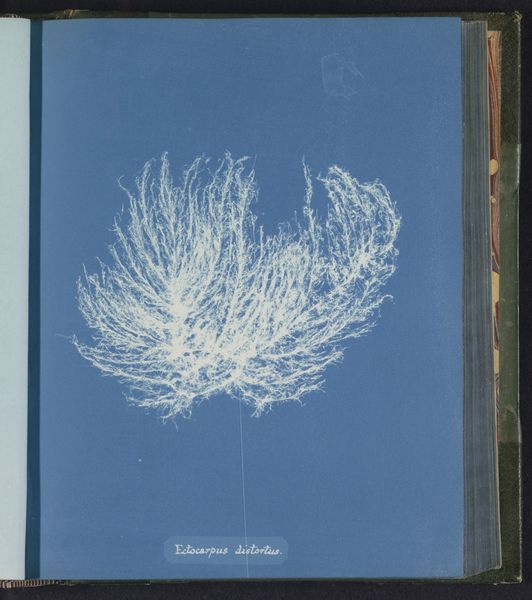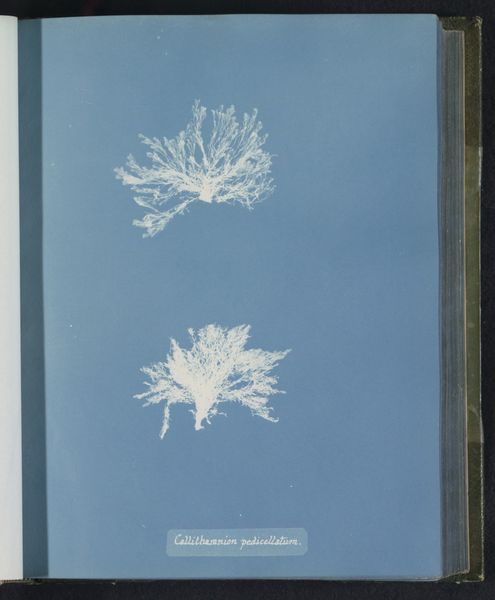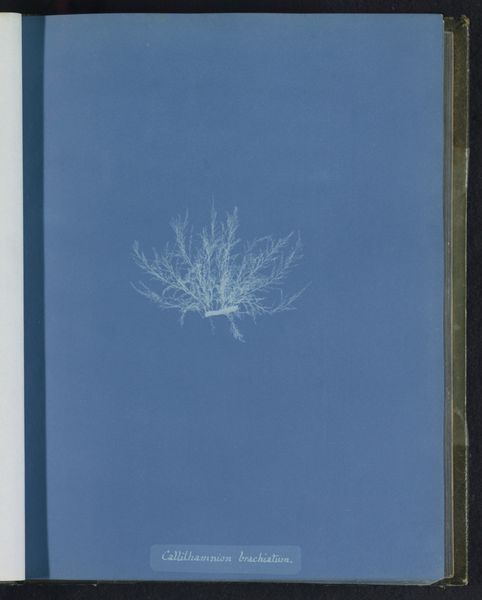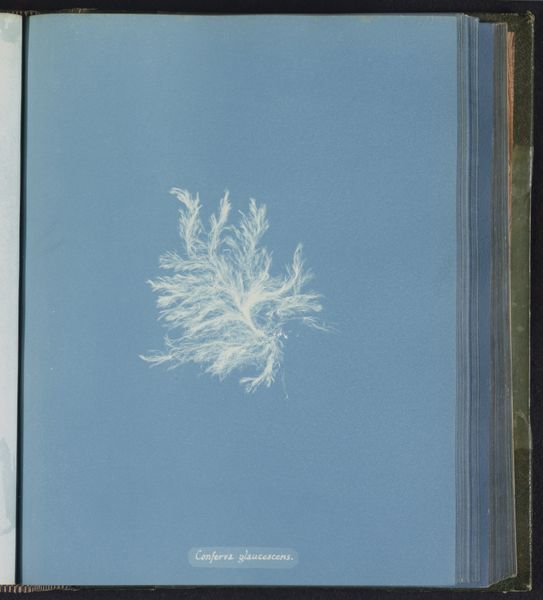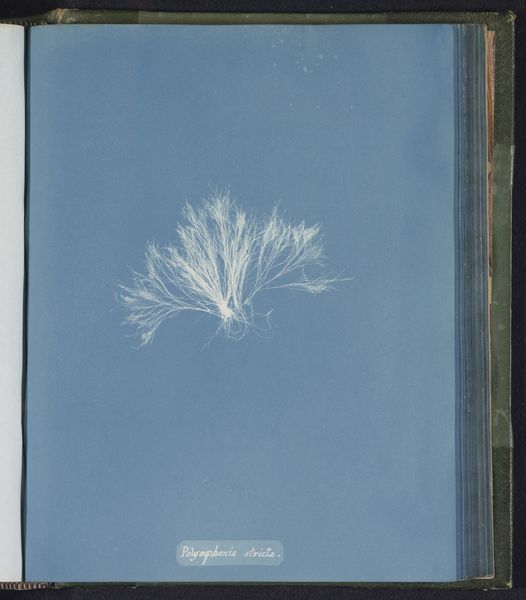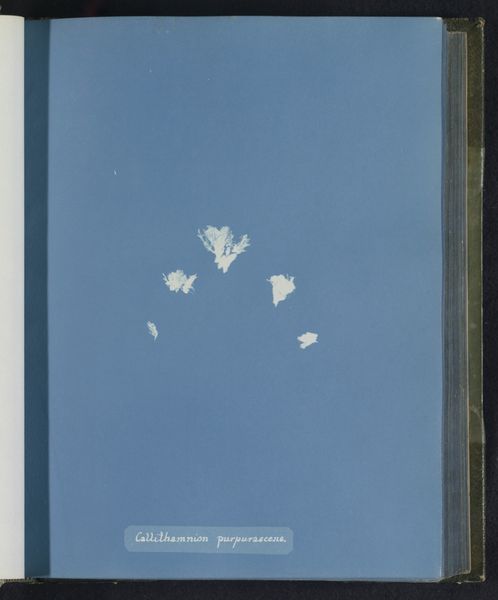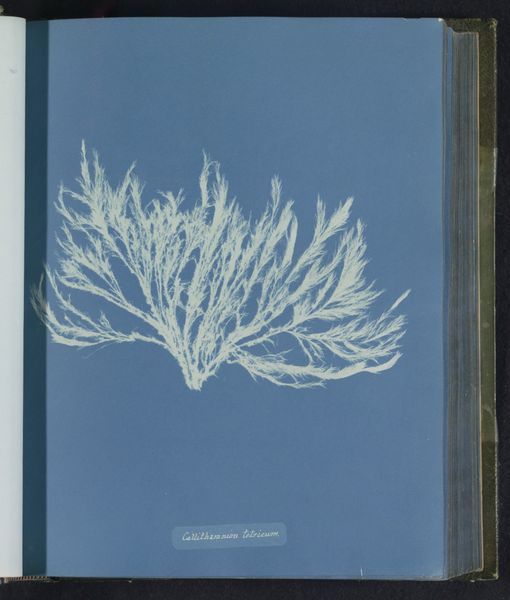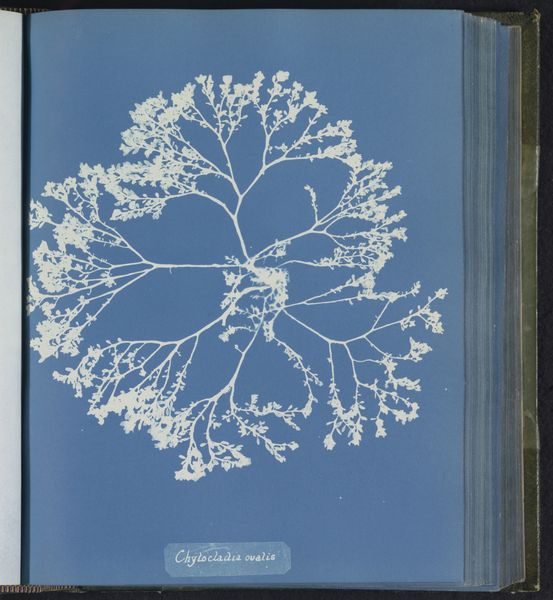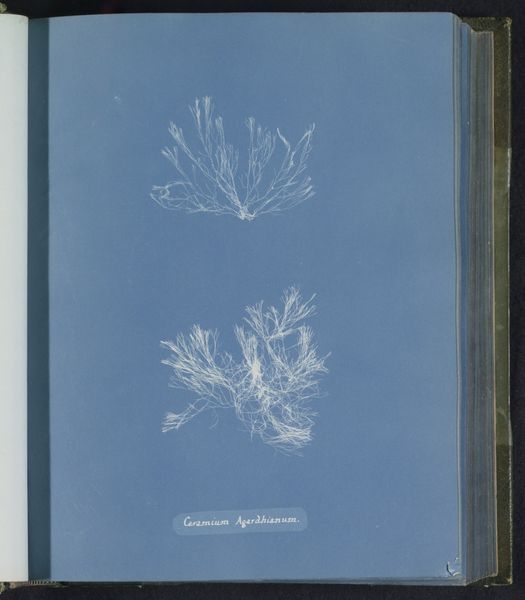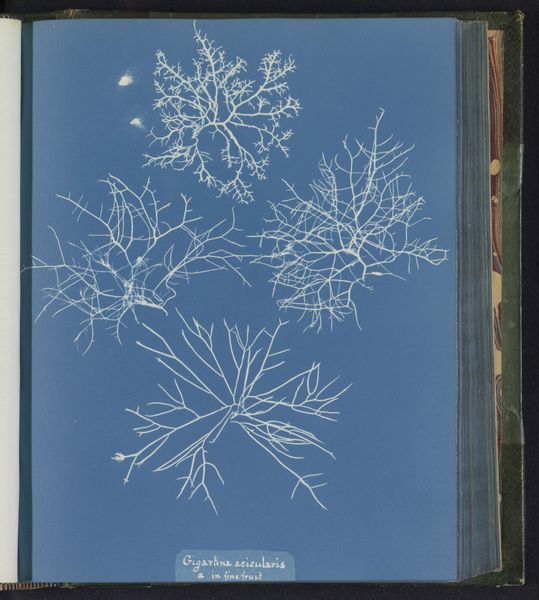
print, cyanotype, photography, albumen-print
#
aged paper
# print
#
cyanotype
#
photography
#
personal sketchbook
#
book mockup
#
fading type
#
romanticism
#
publication mockup
#
watercolour bleed
#
sketchbook art
#
albumen-print
Dimensions: height 250 mm, width 200 mm
Copyright: Rijks Museum: Open Domain
Curator: Ah, this cyanotype by Anna Atkins, titled "Ceramium diaphanum," from around the 1840s, always takes my breath away. It's ethereal, isn’t it? Editor: Ethereal, yes, but also quite arresting in its simplicity. It’s blue. Stark blue. It looks like an x-ray, and somehow brings to mind both medical examination and natural documentation. It has a surprisingly cold affect to me. Curator: I feel it’s the opposite, actually. Knowing this is one of the earliest examples of photography as art...it feels intimate, almost like peering into a scientist's sketchbook where something is not dissected, but revered. The blue reminds me of moonlight on the ocean depths where this delicate seaweed sways. Editor: But that blue! That particular shade comes from the cyanotype process. Iron salts, sunlight, specific timing...It’s less about romantic moonlight and more about chemical reactions and paper. This process allowed for relatively easy replication, expanding access to scientific illustrations beyond the elite. Think about the hands involved – preparing the chemicals, laying out the seaweed, monitoring the exposure...labor gives it beauty! Curator: True, but think of Atkins herself. A woman in science at that time, using this newly accessible medium not just for documentation, but expressing a deep wonder at nature! Each print became its own unique object— sun-kissed into existence. Almost alchemical, don't you think? Editor: Precisely! That's what grabs me. The way this technique bridges the gap between scientific precision and something much more visceral, handmade even! Each piece tells a tale about the materials and means of production themselves. The process is far from automated; the unique beauty resides in its reliance on a physical interaction with the medium. Curator: It makes you think of a secret language being whispered from the ocean floor. Thank you. Editor: No, thank you! I may have to re-evaluate the romantic aspect to this technique. Seeing all of these chemical and process interactions actually illuminates how handmade early photography truly was.
Comments
No comments
Be the first to comment and join the conversation on the ultimate creative platform.
